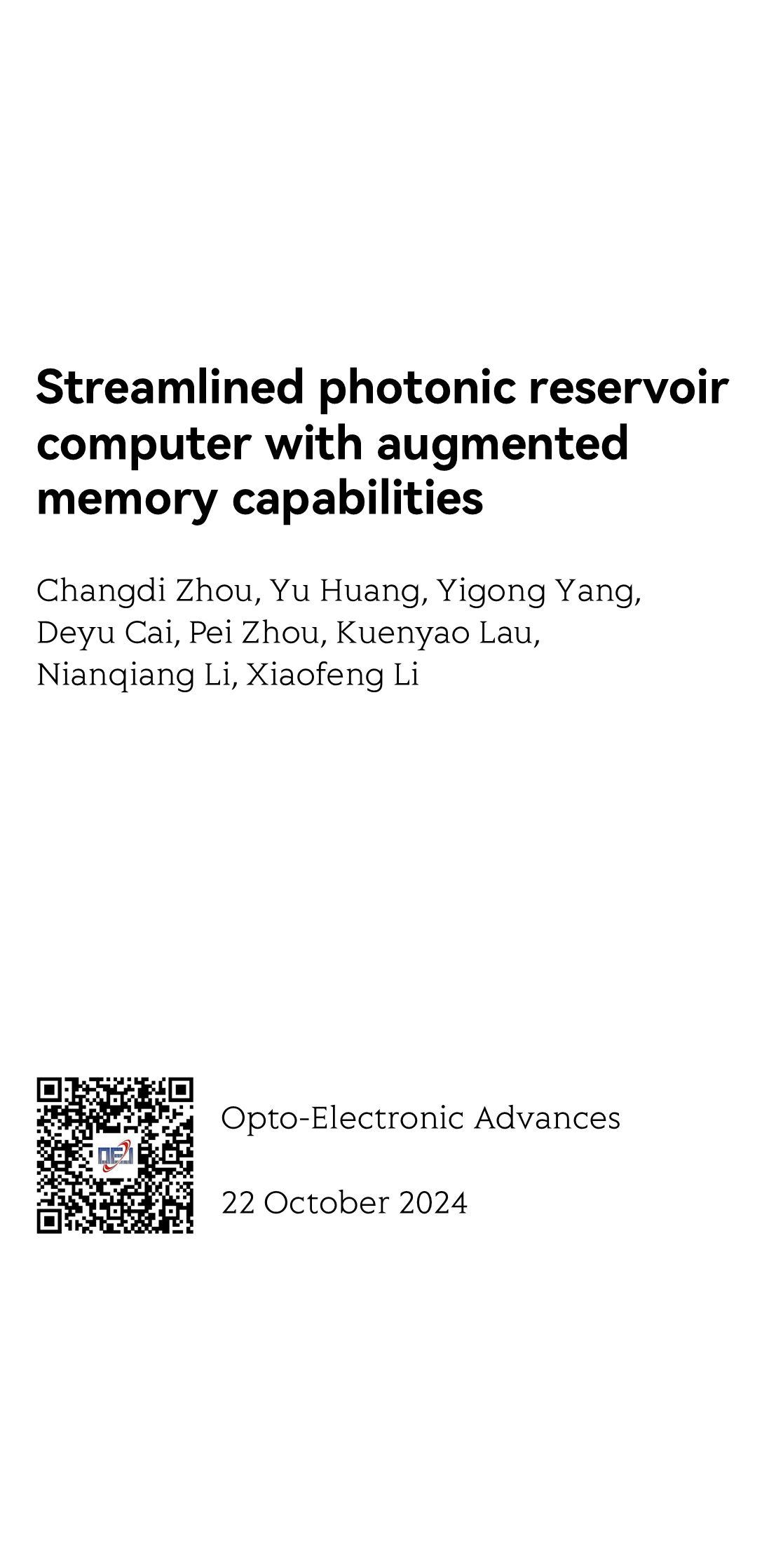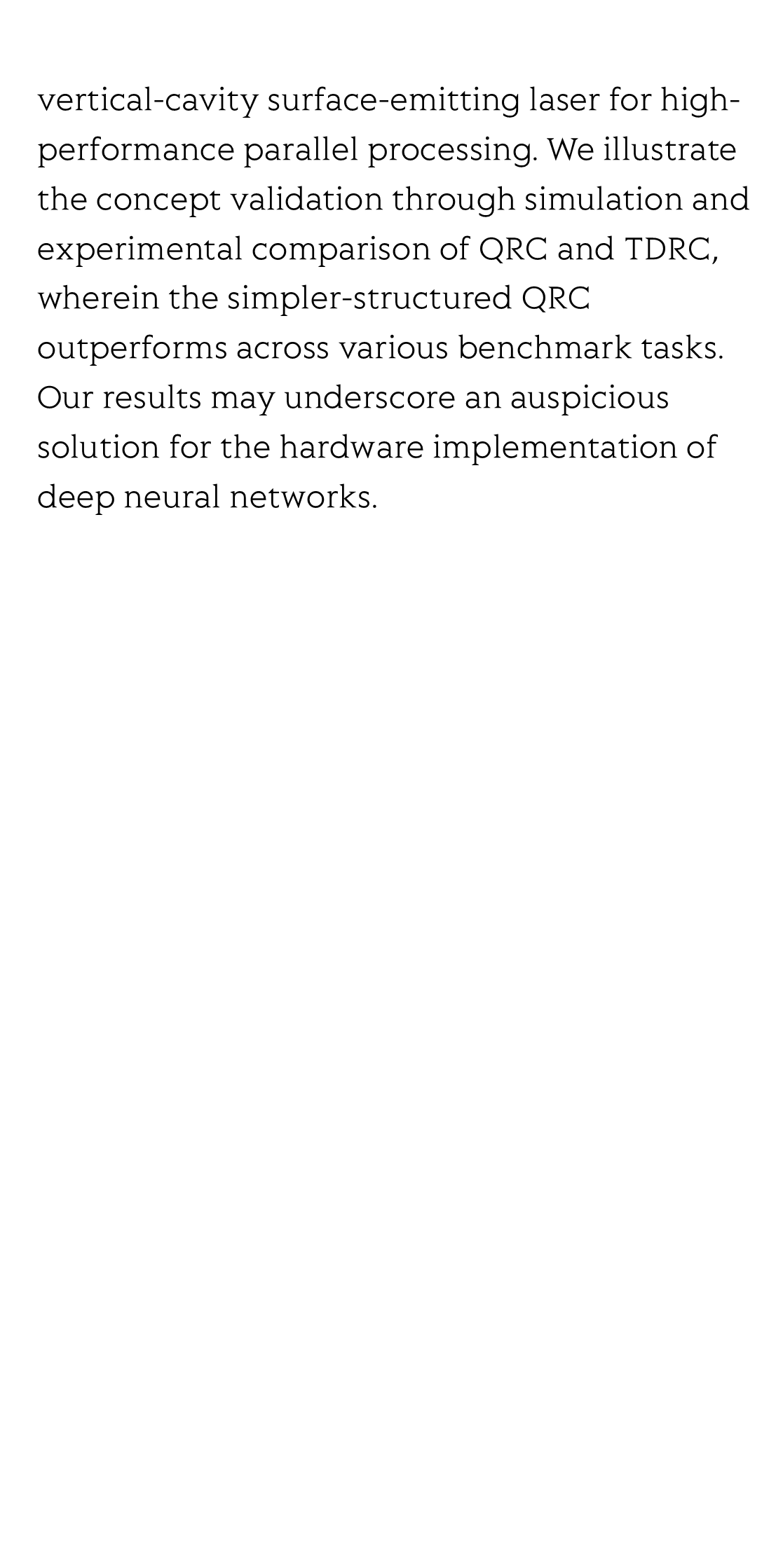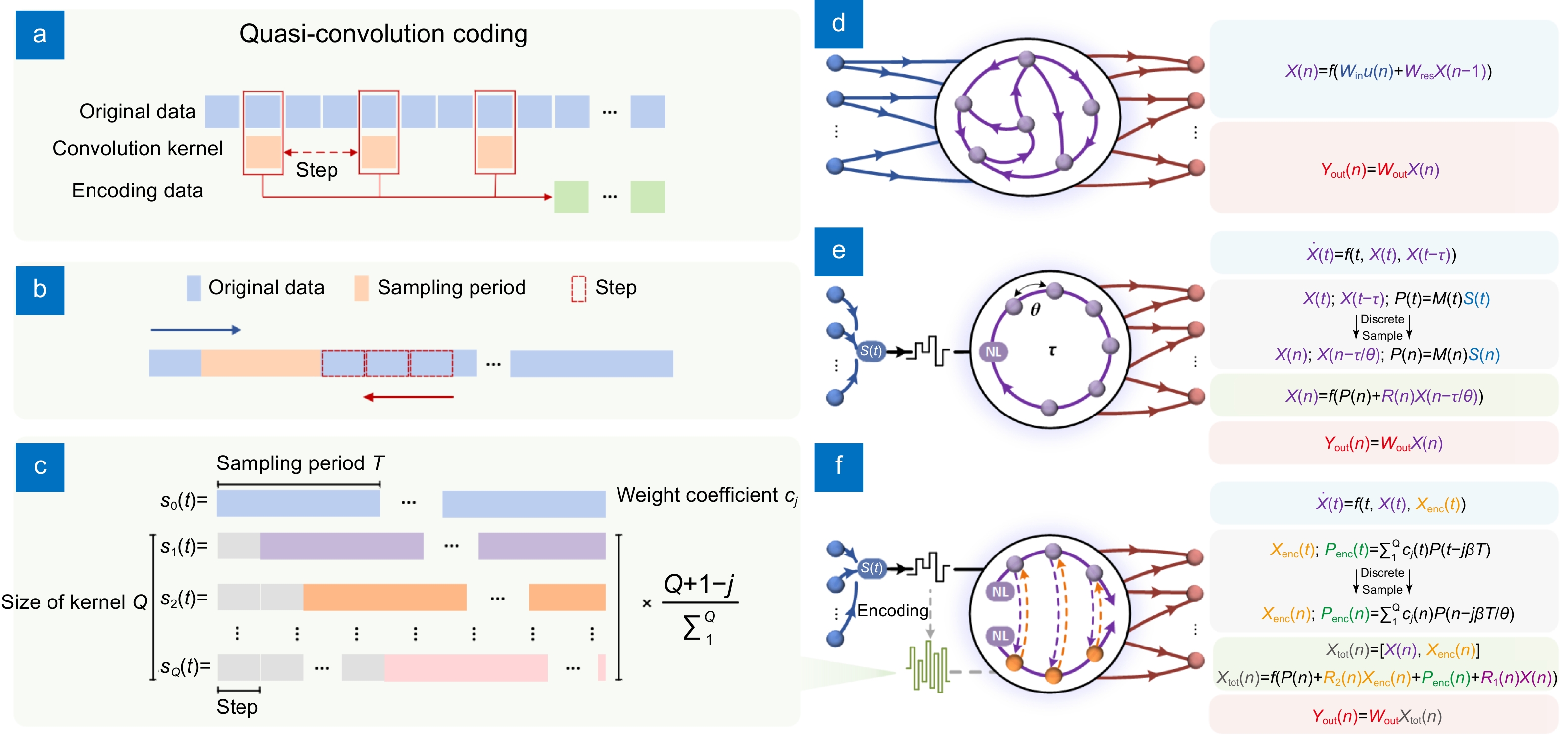(Peer-Reviewed) Streamlined photonic reservoir computer with augmented memory capabilities
Changdi Zhou 周长笛 ¹ ², Yu Huang 黄于 ¹ ², Yigong Yang 杨一功 ¹ ², Deyu Cai 蔡德宇 ¹ ², Pei Zhou 周沛 ¹ ², Kuenyao Lau 刘坤耀 ¹ ², Nianqiang Li 李念强 ¹ ², Xiaofeng Li 李孝峰 ¹ ²
¹ School of Optoelectronic Science and Engineering & Collaborative Innovation Center of Suzhou Nano Science and Technology, Soochow University, Suzhou 215006, China
中国 苏州 苏州大学光电科学与工程学院 苏州纳米科技协同创新中心
² Key Lab of Advanced Optical Manufacturing Technologies of Jiangsu Province & Key Lab of Modern Optical Technologies of Education Ministry of China, Soochow University, Suzhou 215006, China
中国 苏州 苏州大学 江苏省先进光学制造技术重点实验室 教育部现代光学技术重点实验室
Opto-Electronic Advances
, 2024-10-22
Abstract
Photonic platforms are gradually emerging as a promising option to encounter the ever-growing demand for artificial intelligence, among which photonic time-delay reservoir computing (TDRC) is widely anticipated. While such a computing paradigm can only employ a single photonic device as the nonlinear node for data processing, the performance highly relies on the fading memory provided by the delay feedback loop (FL), which sets a restriction on the extensibility of physical implementation, especially for highly integrated chips.
Here, we present a simplified photonic scheme for more flexible parameter configurations leveraging the designed quasi-convolution coding (QC), which completely gets rid of the dependence on FL. Unlike delay-based TDRC, encoded data in QC-based RC (QRC) enables temporal feature extraction, facilitating augmented memory capabilities. Thus, our proposed QRC is enabled to deal with time-related tasks or sequential data without the implementation of FL.
Furthermore, we can implement this hardware with a low-power, easily integrable vertical-cavity surface-emitting laser for high-performance parallel processing. We illustrate the concept validation through simulation and experimental comparison of QRC and TDRC, wherein the simpler-structured QRC outperforms across various benchmark tasks. Our results may underscore an auspicious solution for the hardware implementation of deep neural networks.
Flicker minimization in power-saving displays enabled by measurement of difference in flexoelectric coefficients and displacement-current in positive dielectric anisotropy liquid crystals
Junho Jung, HaYoung Jung, GyuRi Choi, HanByeol Park, Sun-Mi Park, Ki-Sun Kwon, Heui-Seok Jin, Dong-Jin Lee, Hoon Jeong, JeongKi Park, Byeong Koo Kim, Seung Hee Lee, MinSu Kim
Opto-Electronic Advances
2025-09-25
Dual-frequency angular-multiplexed fringe projection profilometry with deep learning: breaking hardware limits for ultra-high-speed 3D imaging
Wenwu Chen, Yifan Liu, Shijie Feng, Wei Yin, Jiaming Qian, Yixuan Li, Hang Zhang, Maciej Trusiak, Malgorzata Kujawinska, Qian Chen, Chao Zuo
Opto-Electronic Advances
2025-09-25







